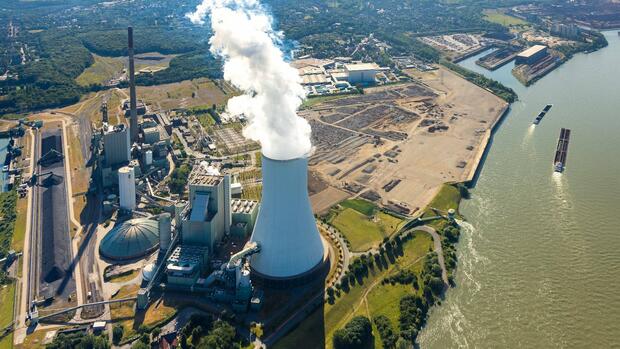The electricity producer is for sale.
(Photo: imago images/Hans Blossey)
Frankfurt The sale of Germany’s fifth largest electricity producer Steag is entering the final phase. According to financial sources, the municipal owners have selected infrastructure investors EQT from Scandinavia, KKR from the USA, EPH from the Czech Republic and Asterion from Spain for the final round.
Binding offers are due at the end of July, and one of the interested parties is expected to be awarded the contract in August. Steag, the owners and the bidders declined to comment or were initially unavailable.
In view of a jump in profits at Steag, the sellers are hoping for a high selling price. Thanks to record prices for electricity and gas, Steag reported a net profit of 1.9 billion euros in 2022, according to financial sources. However, the profit explosion is largely due to the increased market value of derivatives; profits are likely to fall again significantly once prices have normalised. Officially, the balance sheet will only be published after the sale.
Due to the energy crisis, Steag was able to keep coal-fired power plants connected to the grid
With these figures behind them, the owner municipalities of Dortmund, Essen, Bochum, Duisburg, Oberhausen and Dinslaken expect to be able to sell the company at a profit, which hardly anyone expected a year ago. After ever-increasing losses, the coal-fired power company agreed on a restructuring plan with its owners at the end of 2021. Part of the agreement is a sale of the company by the end of the year.
The acquisition of the company from the chemical company Evonik cost a good 1.2 billion euros in 2010. Twelve years later, a total of 1.8 billion euros in debt and pension obligations weighed on Steag.
During the ongoing energy price crisis as a result of the Russian attack on Ukraine, Steag was able to keep several power plants online that should have been shut down at the end of October 2022. Instead of an output of 700 megawatts, Steag achieved an output of 3.7 gigawatts.
In preparation for the sale, the owners of the KSBG holding decided in October to split Steag into a “green” and a “black” division. Although many investors are interested in Steag’s renewable energy activities, they are not interested in the traditional core business of generating electricity from hard coal.
Group is split up, but will be sold as a whole
The cities finally agreed to bring Steag onto the market as a whole, but to legally separate the two areas so that buyers can continue to run them as individual companies.
This is important not least because many investors have strict sustainability guidelines that make investments in fossil fuels more difficult. In addition, although bank financing for wind power and solar systems can be easily obtained, this is not the case for coal-fired power plants, which are currently profitable but unattractive in the long term.
More: The energy industry wants clarity when it comes to building new gas-fired power plants – and is presenting a proposal
